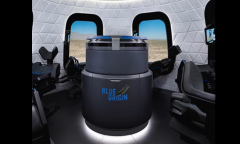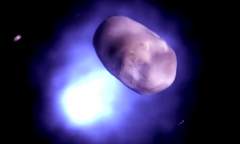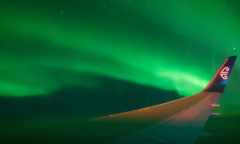By Rose Ver, | April 03, 2017

MAVEN'S MISSION TO MARS - MINI SPACE DOCUMENTARY/ YouTube
Mars, the red planet is stripped of its atmosphere, hence it has lost its ability to support life. The U.S. National Aeronautics and Space Administration or NASA thru the Mars Atmosphere and Volatile Evolution Mission has revealed that the planet could have been a vibrant place. However, it has lost its atmosphere and turned into uninhabitable desert.
Like Us on Facebook
In various reports, the gas that is found on Mars is slowly being sucked into space. Results of the study of a group of MAVEN researchers led by Bruce Jakosky supported this claim. A major gas of concern in the study is argon that is almost unreactive to any other element. The group revealed that an estimated 65% of the argon in the atmosphere is lost and this is attributed to wind action and solar radiation.
At present, Mars is not only a desert planet but its atmosphere is extremely very thin. However, it used to have a thicker atmosphere. Another result of the study revealed that carbon dioxide used to be present in amounts similar to that of the Earth's atmosphere. Likewise, the Martian surface has an atmospheric pressure that is estimated at a 100th or 1000th of that of the Earth at sea level. With the thin air, Mars water could easily reach boiling point.
#MAVEN Reveals Speed of Solar Wind Stripping Mars' Atmosphere https://t.co/ikxwCaxz2g VIDEO: https://t.co/fl4OrJT5mb pic.twitter.com/hFLUihGyeB
— NASA's MAVEN Mission (@MAVEN2Mars) November 5, 2015
However, the MAVEN study suggested that Mars used to have liquid water billions of years ago as shown by the dry riverbeds and minerals present. NASA's MAVEN is continuously conducting studies on Mars atmospheric changes. Still, the scientists are using argon loss as the indicator gas that would determine the amount of other gases that are lost into the atmosphere.
-
Use of Coronavirus Pandemic Drones Raises Privacy Concerns: Drones Spread Fear, Local Officials Say

-
Coronavirus Hampers The Delivery Of Lockheed Martin F-35 Stealth Fighters For 2020

-
Instagram Speeds Up Plans to Add Account Memorialization Feature Due to COVID-19 Deaths

-
NASA: Perseverance Plans to Bring 'Mars Rock' to Earth in 2031

-
600 Dead And 3,000 In The Hospital as Iranians Believed Drinking High-Concentrations of Alcohol Can Cure The Coronavirus

-
600 Dead And 3,000 In The Hospital as Iranians Believed Drinking High-Concentrations of Alcohol Can Cure The Coronavirus

-
COVID-19: Doctors, Nurses Use Virtual Reality to Learn New Skills in Treating Coronavirus Patients












